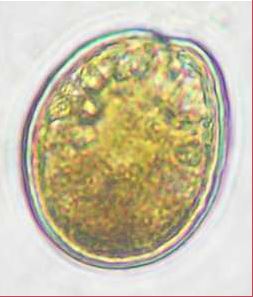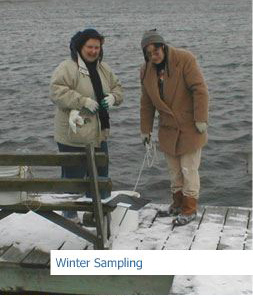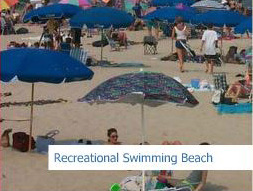Citizen Monitoring Program
2018 WATER QUALITY SUMMARIES AND REPORTS
Report V4-2018, Period 7/6/18 to 7/19/18
- The fourth set of reports covers the period of July 6 to 19. Precipitation and temperatures were close to normal.
- Low Dissolved Oxygen readings (<4 ppm) were common in some tributaries and canals. Severely low readings (< 2 ppm) were restricted to a few dead-end canals and to an area near the overflow drain for Lake Gerar Rehoboth that had an accumulation of algae scum. Periodic scattered crab kills continued to be observed in upper Indian River at low tide.
- Accumulations of Nuisance Aquatic Vegetation (NAV) were mostly minor. One major wind-driven accumulation was noted in lower Indian River Bay at Pot Nets seaside.
- Total Enterococcus bacteria levels (TE) were elevated in a few tributaries and at the overflow drain for Lake Gerar.
- Harmful Algae Blooms (HAB) remained limited. In the ocean and at the Inlets, potentially toxic Dinophysis and Karenia were found at background concentrations. In the estuaries, isolated blooms of non-toxic Gyrodinium were found in a few tributaries and an isolated, dense Heterosigma bloom (potentially toxic to fish) was seen in South Bethany. Moderate blooms of blue-green algae continued at Red Mill Pond and in the Rehoboth Lakes.
Report V3-2018, Period 6/22/18 to 7/5/18
- The third set of reports covers the period of June 22 to July 5. Precipitation was below normal and temperatures were a bit above normal.
- Low Dissolved Oxygen readings (<4 ppm) were seen in 2 tributaries, a few canals and at 2 bayside sites. Severely low readings (<2 ppm) were restricted to one tributary and a few canals. Periodic scattered crab kills continued to be observed in upper Indian River at low tide.
- Accumulations of Nuisance Aquatic Vegetation (NAV) were mostly minor. One major wind-driven accumulation was noted at the James Farm.
- Total Enterococcus bacteria levels (TE) were only elevated in a few locations, however the geometric means for the season remain elevated at many locations.
- Harmful Algae Blooms (HAB) were limited. In the ocean and at the Inlets, potentially toxic Dinophysis and Karenia were found at background concentrations. In the estuaries, isolated blooms of Karlodinium and Chloromorum (potentially toxic to fish) were seen in canals. Moderate blooms of blue-green algae continued at Red Mill Pond and were found in the Rehoboth Lakes.
Report V2-2018, Period 6/1/18 to 6/21/18
- The second set of reports cover the period of June 1 to 21. Above average rainfall continued throughout the first 2 weeks of June. Temperatures were about average.
- Low Dissolved Oxygen (DO) readings (< 4 ppm) were widespread. Many severely low DO readings (< 2 ppm) were seen in a few tributaries and canals. Periodic scattered crab kills continued to be observed in upper Indian River to low tide.
- Accumulations of Nuisance Aquatic Vegetation (NAV) continued to be unusually low this year, especially in canals. Only one major accumulation was noted in a dead end canal.
- Total Enterococcus bacteria levels (TE) were quite elevated in a few locations and slightly elevated in several locations.
- Harmful Algae Blooms (HAB) of potentially toxic Pseudonitzchia and Dinophysis persisted at low levels at the Inlets. A few moderate blooms of non-toxic algae were seen in the estuary. An early bloom of Microcystis, a blue-green algae, became moderately dense in Red Mill Pond.
Report V1-2018, Period 4/1/18 to 5/31/18
- The first set of reports cover the period of April 1 to May 31. The month of April and the first half of May were generally dry and cool. The second half of May was extremely wet with more than 10” of rain.
- Low Dissolved Oxygen (DO) readings (<4 ppm) began to appear in tributaries and canals in May, as is usual. Low DO readings at Mulberry Landing and the Diamond Pond spillway in late May were unusual and were likely due to the series of large rain events. Severely low DO readings (<2 ppm) were limited to one observation in upper Indian River. This coincided with reports of scattered dead juvenile crabs in the area at low tide. Similar crab kills were observed periodically during the second half of May. Note that DO readings greater than 5 ppm are not listed in the report; this includes some readings from crab kill investigations.
- Accumulations of Nuisance Aquatic Vegetation (NAV) were unusually low this year, especially in canals. One major wind-driven accumulation was noted in lower Indian River Bay at Pot Nets seaside.
- Total Enterococcus (TE) bacteria levels for the most recent sampling event in late May were fairly low, presumably having been diluted by heavy rainfall. High geometric means for the season so far were due to elevated TE values earlier in the season, primarily in the mid-April sampling that followed a significant rain event.
- Harmful Algae Blooms (HAB) included moderate blooms of potentially toxic Pseudonitzchia in April at the Indian River Inlet, in Indian River Bay and in the lower DE Bay. Periodic blooms of potentially toxic Dinophysis were seen in Torquay canal in May. Fortunately, this is outside of approved shellfish harvesting areas and only low levels were seen in other parts of the estuary. A few moderate blooms of Karlodinium and Heterosigma (potentially toxic to fish) were seen in canals, and a few blooms of non-toxic diatoms were seen in tributaries. Early blooms of potentially toxic blue-green algae (Cyanobacteria) were observed in Red Mill pond and downstream in Old Mill Creek.
CURRENT REPORTS
- Low Dissolved Oxygen Reports
- Nuisance Aquatic Vegetation Reports
- Bacteria Reports
- Harmful Algae Reports
ARCHIVE OF PREVIOUS YEAR’S REPORTS

Copyright © 2016 University of Delaware College of Earth, Ocean, and Environment and the Delaware Sea Grant College Program | 302-645-4252





